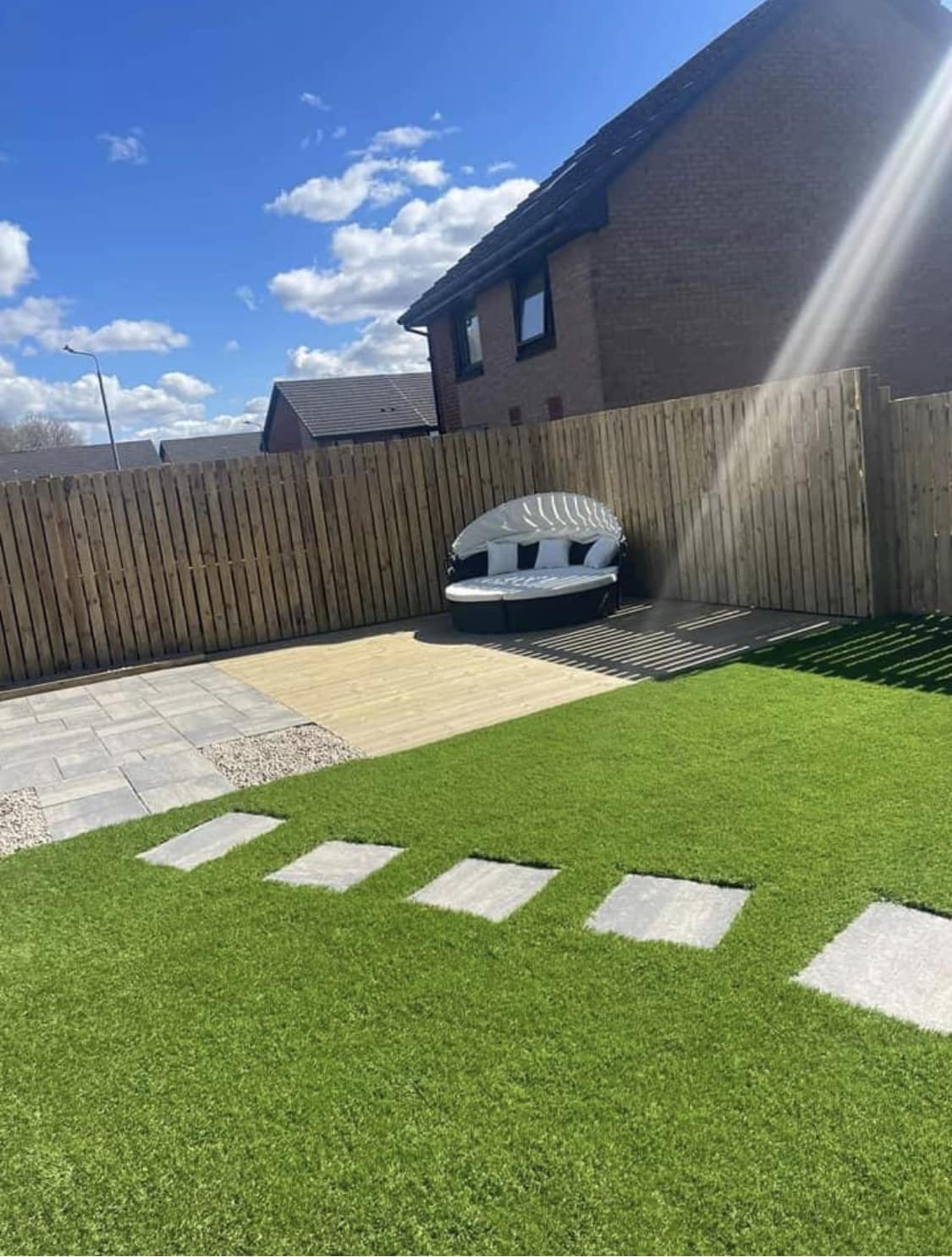
Are you someone who dreams of a lush, picturesque lawn but dreads the constant upkeep? The traditional natural grass lawn has long been the default choice, but in recent times, a contender has emerged – synthetic grass, affectionately known as Astro Turf. This article takes you on a journey through the positives and negatives of opting for synthetic grass. By the time you're done reading, you'll have a clearer understanding of whether this artificial alternative is truly the ultimate solution for your lawn.
The Upside of Astro Turf
Minimal Maintenance, Maximum Pleasure
Imagine a world where you can bid farewell to the weekly lawn mowing ritual, the relentless battle against weeds, and the thirsty demands of natural grass. Synthetic grass brings with it the gift of minimal maintenance. No more early morning wake-up calls to tend to your lawn – instead, you get more time to enjoy it.
Protecting the Earth, Drop by Drop
In an era where water conservation is paramount, synthetic grass shines as a savior. Forget the incessant need for watering that plagues natural lawns. By opting for synthetic grass, you're doing your bit to alleviate the strain on local water resources while maintaining a pristine lawn.
A Green Oasis, All Year Round
Winter, spring, summer, or fall – synthetic grass remains a vibrant shade of green throughout the year. It laughs in the face of seasonal changes, offering you a lush expanse regardless of weather conditions. This year-round beauty adds to your home's curb appeal and your own peace of mind.
Feel the refreshing breeze even if you're plagued by allergies
For those plagued by grass allergies, a natural lawn can feel like an enemy. Synthetic grass comes to the rescue, offering an allergen-free space that allows you and your family to revel in the outdoors without the constant sneezing and itching.
The Downside of Astro Turf
Cost – More than Just Pennies
While the long-term savings on maintenance are undeniable, let's address the elephant in the room – the initial cost. The investment required for purchasing the synthetic grass, preparing the base, and professional installation can be substantial. However, many consider it a worthwhile expense given the reduced maintenance costs over time.
Real or Fake? The Aesthetic Debate
No matter how advanced technology becomes, some synthetic grass still falls short of mimicking the appearance of real grass. The texture and color might not capture the nuances of nature, potentially disappointing those who yearn for an authentic outdoor experience.
Hotfooting it to Reality: Heat Retention
Synthetic grass has been known to retain heat, especially when exposed to direct sunlight for prolonged periods. This can result in uncomfortably high surface temperatures, potentially hampering outdoor activities during warmer months. However, ongoing innovations aim to counteract this issue through heat-resistant materials.
Green, But at What Cost? Environmental Considerations
The production of synthetic grass relies on materials derived from petroleum – a fact that raises valid environmental concerns. From carbon emissions to resource depletion, the eco-footprint of synthetic grass production is under scrutiny. Additionally, the challenge of responsibly disposing of synthetic turf at the end of its life cycle presents a sustainability dilemma.
Pitting Natural Grass Against Synthetic Grass
The Natural Elegance of Real Grass
There's an innate charm in the authenticity of real grass – the scent of earth, the touch of natural fibers underfoot. Natural grass contributes to local ecosystems, playing host to insects and small animals while supporting biodiversity.
Synthetic Grass: Where Convenience Meets Durability
On the flip side, synthetic grass boasts uniform beauty without the hassle of constant upkeep. It eliminates the need for pesticides and fertilizers, reducing chemical exposure in your outdoor space. Moreover, it stands up better to heavy use, making it an attractive choice for households with active kids and pets.
Making the Call
The choice between natural and synthetic grass boils down to your priorities. If low maintenance, water conservation, and an evergreen lawn are non-negotiables, synthetic grass could be your saving grace. But if the sensory experience and environmental benefits of natural grass tug at your heart, traditional is the way to go.
Factors that Play a Role
Budget Blues and Greens
Before making a decision, assess your budget – not only for the initial installation but also for the long term. While synthetic grass may demand a heftier upfront investment, its reduced maintenance costs can balance the scales over time.
Aesthetic Tastes: Natural vs. Synthetic
Let your aesthetic inclinations guide you. Some homeowners revel in the natural allure of real grass, while others find solace in the uniformity of synthetic turf.
Climate Matters: Sun, Snow, and Everything In-between
Your local climate wields considerable influence over the suitability of synthetic grass. Extreme temperatures and prolonged sun exposure can affect its performance and comfort.
Setting the Stage: Installation and Upkeep
Calling in the Pros
For optimal results, entrust synthetic grass installation to the experts. Proper groundwork and installation techniques ensure the long-term health and appearance of your lawn.
Sweeping Concerns Away: Cleaning and Maintenance
Periodic cleaning is essential to keep synthetic grass in top condition. Regular brushing and rinsing will uphold its appearance and longevity.
A Long-Term Love Affair: Durability and Lifespan
Synthetic grass boasts a lifespan of 15 to 25 years on average, influenced by usage and climate conditions. Meticulous maintenance can extend its durability, making it a worthwhile investment.
In Conclusion
In the realm of lawn solutions, artificial grass stands tall with its distinct advantages. Low maintenance, water-saving prowess, and perennial vibrancy draw many homeowners in. However, the sticker shock of initial costs, potential heat retention, and environmental impact stemming from production and disposal begs careful consideration. The decision between natural and synthetic grass hinges on personal preferences, budget, and a commitment to eco-friendly practices. To explore more, visit our website at Artificial Super Grass today!
FAQs – Quenching Your Curiosity
Is synthetic grass safe for my furry friends and kids?
Absolutely. Synthetic grass is designed to be non-toxic and lead-free, creating a safe and comfortable outdoor haven for all members of the family.
Can I put on my DIY hat for synthetic grass installation?
While it's conceivable, it's advisable to opt for professional installation to ensure impeccable results. Proper groundwork and techniques are pivotal for a flawless lawn.
Will my synthetic grass lose its color under the sun?
Most contemporary synthetic grass is crafted to resist UV rays, reducing the chances of fading due to sunlight exposure.
How many years can I expect my synthetic grass to last?
With proper care, synthetic grass can endure for 15 to 25 years, dependent on usage and climate factors.
Does synthetic grass influence my property's value?
Pristine synthetic grass can heighten curb appeal and potentially augment property value, thanks to its appealing aesthetics and low-maintenance nature.
